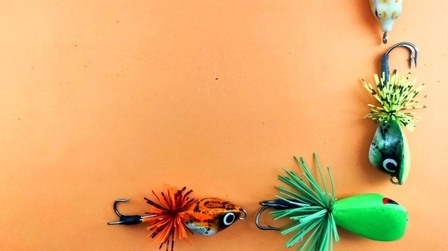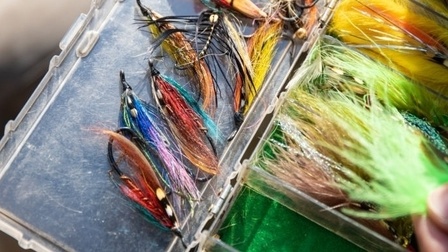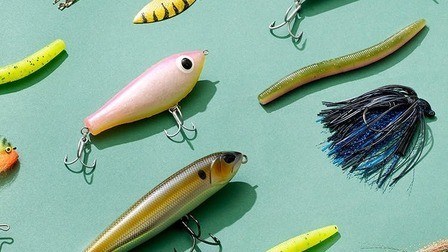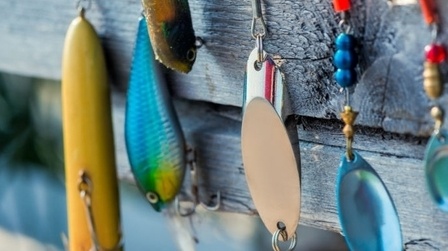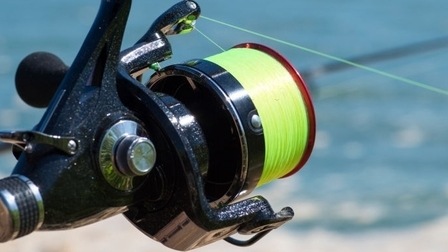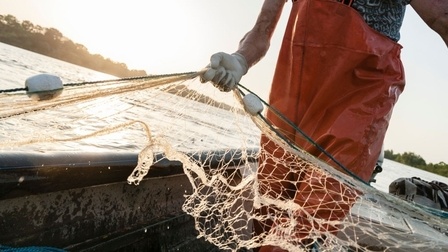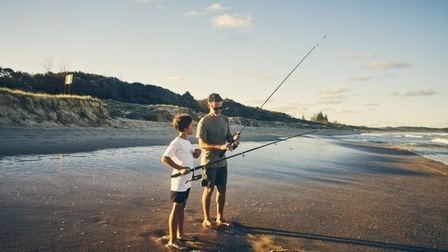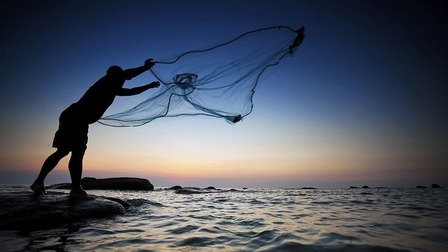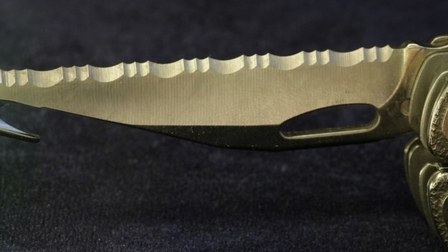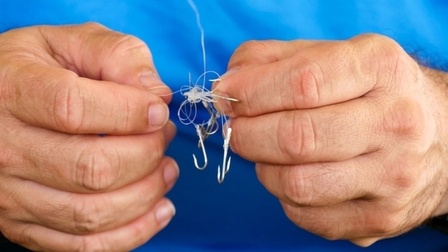Fishing is one of the popular outdoor activities. However, around this hobby, some things need to be noticed, such as fishing techniques, fishing tools, fishing boats, knots,…And that should be a big trouble for beginners when first participating in the hobby. And we are here to support you in the fishing hobby field. In this article, we will discuss the benefits of fishing line that may be useful for beginners.
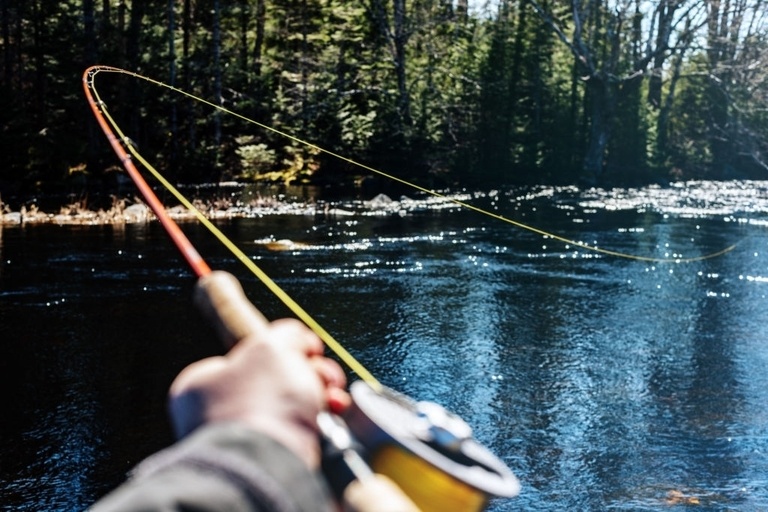
Fishing line is an issue that many anglers are interested in. However, anglers want to increase fishing efficiency based on a fishing experience, and the fishing line plays an essential role in starting a fishing journey. Fishing lines are as diverse as the popular products around us. Therefore, Fishing lines are divided into different levels: high-class, mid-range and poor quality.
What is a Fishing Line?
A fishing line is an unforgettable tool when fishing. This is a long thread made from some material such as nylon, braid, silk,…Anglers use it with the fishing rod to connect from the lure to the fishing reel. Depending on the anglers' purpose, the fishing line has different types of uses. Besides, each of them has its benefits as a fishing line, also the disadvantages.
Understanding why we need to choose the right fishing line, anglers must define which bait performances for the fishing trip. Typically, it separates into three areas:
- The Upper Area: Since the bait is used on the upper level of the water, you will use a fishing line that floats on the water's surface and is not too visible. However, some types of water fishing use the surface for bushes. In that situation, anglers should choose the line based on the clarity of the water.
- The Middle Area: When fishing at this level, most anglers use Crankbaits, Spinnerbaits and Swimbaits lures. Choosing the right fishing line requires some technique because it depends on the clarity of the water and the type of fishing you are using. In particular, you want to use a line that is less visible and less stretched, with the line floating or sinking depending on the lure you are using.
- Bottom Area: Usually, bottom fishing usually uses plastic baits or Jig baits because of its pros, such as less visible, sensitive, and low load capacity. Using this fishing line requires a submersible line.

Types and Benefit of Fishing Lines
In the fishing equipment market, there are lots of options for fishing lines. However, different lines have different functions and purposes when using. So, choosing the suitable one is a challenging game for new anglers. Moreover, some anglers don't have much experience in fishing. So, they use fishing line without knowing which one is the correct one. So, here is a list of different fishing lines and the benefits of those fishing lines.
1. Monofilament
Monofilament is the most common fishing line for anglers, especially for beginners. It is made out of nylon or plastic. Mono accessible to stretchy and smooth. Relatively strong and usually a less visible line. These lines usually come in many different sizes. Monofilament is a floating line, so it's great to use with the upper area. However, if you fish in water full of weeds or bushes, the plants can cut the line quickly.
Besides, Monofilament can also be used in the mid-level fishing area when you need a line that can stretch and float. The stretch line helps you catch the fish because the stretch line will prevent the bait throwing when the fish jumps. Moreover, the angler can also use Mono for the bottom fishing area with weighted lures. The floating line feature will support lifting the bait out of the bottom of the water to the position you want.
Benefits of monofilament fishing lines:
- Monofilament is the best use for the upper area like freshwater, in and near shore.
- Mono is the best connection with spinning reels and baitcast reels.
- Reasonable and available, easy to find everywhere.
- The stretchy feature can prevent shocks from fish jumping and is abrasion-resistant.
- Easily tie the fishing knot and store it neatly.
- Variety of sizes and colours. Anglers can observe clearly in the water, but the fishes cannot.
2. Braided Fishing Line
Next to Mono lines, that is the braided fishing lines. Braided fishing line is familiar with anglers since it has lots of pros. Braids are made from synthetic plastic fibers. Compared with Monofilament, it is stronger and suitable for fishing larger species. Moreover, the Braided line has no stretchy and highly sensitive line that can support anglers to feel every move of fishes.
A braided is a semi-submersible line (slowly sinking) highly recommended for the middle and upper areas in murky waters. These lines are suitable for saltwater fishing species such as tuna, sharks or giant kingfishers. Besides, the braided line can use low-visibility waters, and anglers need a lot of line on their spool.
Benefits of Braided Fishing Lines:
- Braided has been the standard fishing line since the early 1900s.
- Braided has a small diameter and support to cast exceptionally well.
- It can throw further up to 20-40 yard when compared with other lines.
- It can be used in the upper and middle area, especially the bushes or murky water.
- Braided lines are the best idea for large fish species.
- Its features are from little to no stretchy and high abrasion-resistant.
3. Copolymer Fishing Line
The copolymer fishing line is one of the most straightforward and strongest lines for every angler. The copolymer lines is an upgraded version of Monofilament, and it is much better than Mono lines. It is made with two or more materials such as nylon and different forms of nylon. Compared with another line, we can see that Copolymer thread is less visible than Mono and less stretchy than Fluorocarbon. It is also more sensitive than braided fishing lines. Moreover, the Copolymer line is more highly abrasion-resistant than braided and Fluorocarbon.
One more thing to notice about Copolymer is that it cannot float and is expensive. But, the Copolymer is one type of fishing line that serves many purposes. This line can be used for all types of performances but highly recommend still use in the middle area.
Benefits of Copolymer Fishing Line:
- The Copolymer fishing line is more sensitive than the Fluorocarbon.
- Anglers can feel the bait very well because of its features.
- It can be used in clear waters and rarely seen in the water.
- Less abrasive than Fluoro.
- It is best to use with the horizontal reel (but can also use with the vertical reel).
4. Fluorocarbon Fishing Line
Last but not least, Fluorocarbon – the best fishing line in the ability. Fluorocarbon made in the same technique as Monofilament but denser material. It is still stretchy but not as much as Mono fishing lines and more stretchy than the Copolymer line.
However, the Fluorocarbon fishing line has few cons that we must consider before buying it. The first one is less abrasion-resistant than Mono lines. So if the angler uses them in the upper area it is not a good idea. Especially when fishing around logs and rocks. Because Fluorocarbon is born as the submersible line and best used when fishing in the middle and bottom area. This line is more suitable for high-skill anglers than beginners.
Benefits of Fishing Line:
- Fluorocarbons can be used in the middle and bottom of the water.
- Fluorocarbon is stronger and super abrasion-resistant than other lines.
- It is higher sensitivity than Mono lines that help anglers feel the well.
- It can fish large species, stand well under lots of pressure.
- It is best to use a horizontal reel (you can also use a vertical reel).

End
A fishing line is a familiar tool that cannot be forgotten by any anglers. However, for beginners, choosing the correct fishing line is not easy. Mostly depending on anglers' purpose or terrain, fishing lines have variety in the market. Through this article Benefits of Fishing Line, you can know more about fishing lines and their benefits.

